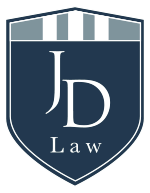PA Court Suppresses Evidence from Warrantless Protective Sweep
Posted in Fourth Amendment on July 12, 2025
In Commonwealth v. Hightower, 2025 PA Super 129, the Pennsylvania Superior Court affirmed a York County judge’s suppression of evidence in a felony drug and firearm case. The ruling provides a critical reminder of the constitutional limits on police conduct during protective sweeps and the plain view doctrine.
Background of the Case
In the case, the York City Police assisted the U.S. Marshals arrest Hightower. Officers arrested Hightower at his front door after a brief struggle. Officers observed movement in a second-floor window. After securing Hightower, police conducted a protective sweep of the home. During the sweep of the second floor, an officer claimed to see “cherry gelato” foil bags, sandwich baggies, and loose marijuana on top of a dresser. Police found a vehicle FOB in the home. The FOB was used to locate a nearby vehicle, and an officer observed a gun in the vehicle. Police later obtained a search warrant and recovered drugs, cash, and a firearm from both the home and the nearby vehicle.
Legal Review of Warrantless Protective Sweep Search
Hightower’s criminal defense attorney filed a motion to suppress and argued that the protective sweep was conducted in violation of Hightower’s constitutional rights, and he argued that all evidence found thereafter must be suppressed as “fruits of the poisonous tree.” York County court ruled that the protective sweep was justified based on articulable safety concerns—particularly the window movement, struggle at the door, and inability to surveil the rear entrance. However, the court found that officers exceeded the lawful scope of the sweep by searching a dresser that clearly could not hide a person.
The court also discredited the officer’s claim that cash was visible in an open drawer, citing photographs that showed the drawer closed. Basically, the judge did not believe the officer. Because the evidence observed on the dresser (i.e., tiny specks of marijuana and legal packaging materials) did not satisfy the “immediately apparent” requirement of the plain view doctrine, the court held the search warrant lacked probable cause. As a result, all evidence from both the home and vehicle was suppressed.
The Superior Court agreed with the trial court and affirmed the decision granting the suppression of evidence
Key Takeaways for Criminal Defense and Law Enforcement
Protective Sweeps Are Limited: Officers may only search areas where a person could reasonably be hiding. Searches of drawers or dressers that obviously cannot conceal a person will likely be deemed unconstitutional.
Plain View Requires Probable Cause: To seize evidence without a warrant under the plain view doctrine, the item’s incriminating nature must be immediately apparent, and officers must explain why based on their training and experience.
Training Must Be Explained: Vague references to “training and experience” won’t suffice. Courts require specific testimony linking an officer’s experience to the conclusions drawn at the scene.
the Superior Court cited to the case of Commonwealth v. Randolph which was a case of mine which I won on appeal after the Centre County court denied suppression – the Superior Court reversed the conviction and ordered that the evidence be suppressed
Fruit of the Poisonous Tree Doctrine Applies Broadly: Evidence derived from an unconstitutional search—including later search warrants—will likely be suppressed.
Final Thoughts
Commonwealth v. Hightower serves as a powerful reinforcement of the Fourth Amendment in Pennsylvania. It underscores the strict boundaries law enforcement must observe, especially when conducting protective sweeps or relying on the plain view exception. For defense attorneys, this case provides persuasive precedent in challenging overreaching searches and ensuring that constitutional rights remain intact.
For a free case review, contact JD Law by email or leave a message at (814) 689-9139. Email is the preferred method of communication, as phone calls are directed to voicemail due to the high volume of spam and unsolicited calls.
